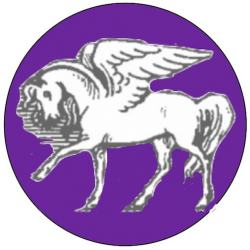Exceptional BODYWORK FOR HORSES IN SOUTHERN OREGON
The Most Breathtaking
Athletes in the World
Deserve The Best Support
"You cannot train a horse with shouts and expect it to obey a whisper."
– Dagobert D. Runes
Better Performers
process how you teach them to move, for
"Movement is life!" ~Moshe Feldenkrais
Helping Horses & Humans Partner Up Pain Free Since 1997 by mobilizing entire musculoskeletal awareness.
you have to demonstrate self carriage in your own body.
ABOUT feldenkrais® for horses
It is taught one-on-one through non-verbal touch which is very similar to how you communicate when you ride. The class format, which only works for humans who take years to learn the basic things horses can do within hours of birth, is called Awareness Through Movement® (or ATM for short). The classes are like a verbally guided treasure hunt through a sensory motor process that will continue to activate your movement potential until the last breath. Consciousness is only activated when accompanied by the kind of mindfulness or sensitivity that horses excel in from birth.

The preferred therapy for acute pain is perhaps massage. The preferred approach to more permanent change is the pattern interrupt that you get when you let the feldenkrais method® of awareness through movement® rock you world!
which aims to train riders and owners to see lameness before it's too late.
Most vets confirm that by the time they see a horse for a lameness evaluation, it's already so obviously lame that expensive surgical interventions or injections are the only option.
A lifelong, avid rider, I currently live with my Dutch Warmblood, ‘Wisconsin,’ in Jacksonville, Oregon. When I first started working with him, he had just had a surgery that it was not certain he would recover from. He had hyper-extended his hock. His previous owner had the vets at UC Davis remove cartilage out of the joint capsule and inject stem cells from his breastbone into the joint. Now, some seven years later, he is still doing well. After all, he has access to many modalities: acupressure, sports massage, myofascial release, laser therapy, far infrared heat, homeopathy, the the learning process that is feldenkrais, which I began to take seriously in 2000. I have since done two years of Advanced Training with Jeff Haller in Seattle in addition to the amazing 4-year Training with Yvan Joly, Frank Wildman and Movement Educators in Santa Barbara, CA which ended in 2004.
To keep Wisconsin fast on his feet, I have since also adopted a five year old
Mustang named, 'Cortez,' who is also a fantastic mover and a handful for both of us!
Find Out More About Wisconsin & Gabrielle - Life After Loss & The Bond Between Horse & Rider

Try A Rider Fitness Lesson Now
Rider Fitness is not just about strength. Flexibility is what allows your reflexes to fire faster than thought. The older you are, the more this is an issue because people tend to unconsciously avoid certain moves as they age. These short lessons restore that range of motion making for a safe, coordinated Rider and are excellent as Rider Warm Ups as well.
Embody Athleticism
Once you do these lessons a few times, you no longer need the audio. Once you remember them, you have begun to embody a return to a more athletic version of yourself...

©2022 Your Life Matters
The following are service marks, trademarks, or certification marks of the Feldenkrais Guild® of North America: Feldenkrais®, Feldenkrais Method®, Functional Integration®, Awareness Through Movement®, ATM®, FI®, GCFP, Guild Certified Feldenkrais Teacher®, and Guild Certified Feldenkrais PractitionerCM




